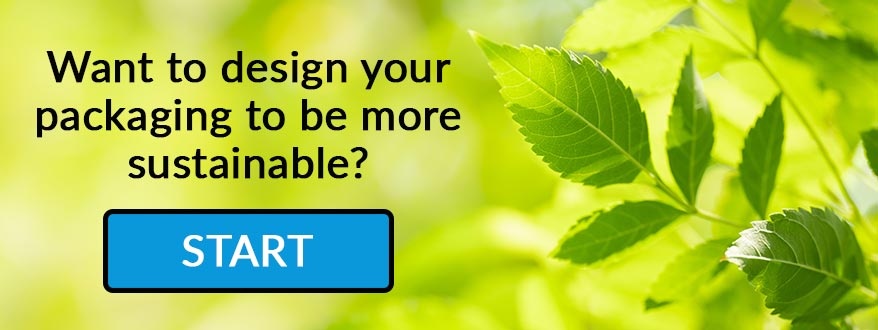4 Elements To Optimize Smart Packaging Strategies
It’s easy to overlook the value of packaging beyond brand recognition and loyalty efforts. Still, smart packaging strategies can remedy that as your operations shift their focus to inbound goods. As packaging gets even more intelligent, it could also have a story to tell your customers when it arrives.
Smart packaging opens up new opportunities to protect your products as they move through the supply chain. It comes with more planning than other boxes but can have significant returns. Let’s look at some of those planning needs and where to look to build out a smart packaging strategy.

Smart Packaging Defined
When we’re talking about smart packaging, it often refers to the containers and packaging housing individual SKUs as they move from production to your warehouse or a partner 3PL’s fulfillment center. These options cover multiple kinds of materials and containers housing interactive technologies.
The “smart” element comes from the tech that companies use for multiple efforts, typically around tracking. Early options monitored goods in transit and would record things like temperature readings over the course of the entire move. They were passive and took readings that you had to then upload to a system after final delivery. Here, you’d check the temperatures to ensure nothing approached a spoilage temperature.
More modern solutions take those same kinds of readings or allow every person interacting with the unit to scan it. Not only do they get information, but they can sync up with different systems to provide alerts if something goes wrong.
Those temperature sensors, for example, can actively broadcast their readings and trigger warnings that a trailer or van may be getting too hot, cold, or humid. This helps you protect shipments and avoid shrinkage in transit.
Some solutions include backup alerts, such as changing the packaging color or a display becoming visible, to signify that there was an issue at some point.
Smart Packaging Strategy 1: Start With Current Packaging
A smart packaging strategy needs to build on your current efforts. You want to narrow the scope of what you might use or try based on needs and costs to inbound freight and average outbound orders.
Every addition to a package can increase its size and weight. The smaller the units you ship, the more likely that a sensor, tag, or another tool will adjust cost and speed.
If you’re using smart packaging to ensure a customer that products are arriving safely, think about how you can incorporate that with existing packaging. Increasing the printing cost slightly or reducing filler in a box may enable you to adopt smart tech without adding a few cents to every last-mile delivery.
Thankfully, inbound freight doesn’t always face big changes. Containers that hold many units or SKUs tend to have room, or you may switch out one of your smallest (or cheapest) items to make room for the sensor.
The core risk here is for larger products. If you need to add significant space for a sensor to track temperature or moisture accurately, or if it adds a few pounds to the order, the tech may push your package into being considered oversized by a carrier.
This most often happens when sensors need exterior casing or housing, but that’s not too common in the industry overall. If that is a possibility, look for ways to limit this.
You don’t want to get caught up in the current pricing issues from carriers as they add more fees and surcharges for larger items. Always fire up a dimensional weight, or DIM weight, calculator, to plan for increases.
Smart Packaging Strategy 2: Refresh Your Approach
Once you’ve got an idea of the impact on your fulfillment, you’ll want to consider the impact of smart packaging on your supply chain. Making the most out of sensors and tech means getting more partners on board with the tools and having them check things for you during a shipment.
Internally this covers training warehouse teams and drivers on how to check packages and sensors. Find out what they need to scan or pull data and how easy it is to put this in their hands.
You may need better Wi-Fi coverage in your warehouse or add an RFID gate near the loading dock to capture details. Leaders also need to be told what alerts mean and how they should react to any warning signs.
Go beyond checklists for recording data and noting incidents. Give them risk assessment support and clear paths to resolving issues, pulling products, and protecting your reputation.
Create a plan to address each internal partner and how this impacts their jobs. Your change management strategy needs to be robust so that people actually follow the new system.
If you’re sending out smart packaging to customers, make it as clear as possible. Something as simple as “blue means ready to use” can help customers view smart packaging as something cool and helpful.
Want to make your packaging more sustainable? We can help!
Smart Packaging Strategy 3: Build Out Partnerships
The other side of the coin is how smart packaging impacts partnerships. Remember, these are often verification tools for more than just your operations. They’re also a collaboration tool so partners can keep items safe in transit.
Sensors create a wealth of data that all of your partners want to access and use. Not only are goods traceable, but companies can use consistent data to benchmark their performance.
Your carrier, for example, may track this temperature reporting information to ensure its reefer trucks are working or to identify if they need maintenance ahead of schedule.
Sensors that help prevent spoilage for your products can also play a role in keeping other goods in transit safe. Carriers and drivers want that protection because it helps their business and reputation with you.
Achieving that benefit comes through the smart packaging strategy. You’ll have to determine what tools you and your partners use, plus how these interact with new sensors.
That way, you pick an alert tool that syncs with in-cab displays or technologies and is usable by the driver. Or, if your fulfillment center can’t scan the special humidity sensor, then they can’t report it and ensure your products are safe for people to buy and use.
Whatever partners are involved in scanning and utilization need to be capable of helping you create this data stream. After learning who is capable, you’ll need to make a good case for why they should be a partner in this.
Sharing data is a strong starting point. You can also let partners know it is how you’ll hold them accountable. Data from these units can help determine who may have caused an issue or damaged an item in transit. Many partners may be willing to adopt new technologies to check procedures and reduce liability.
Smart Packaging Strategy 4: Highlight Sustainability Efforts To Customers
Your customers are becoming more eco-friendly, and that impacts their purchase decisions. According to recent reports, 72% of people are buying more eco-friendly goods now than in the past five years. And 81% estimated they would buy even more eco-friendly items over the next five years. One core element here is the packaging.
Smart packaging does this directly by helping customers avoid buying goods that will go bad. These customers are willing to pay more for sustainable products and for products with environmentally friendly packaging. They’ve demonstrated they will spend a little more if you make a good case.
You can also use the packaging to highlight your green commitments. Let customers see the data and the path their products took. Then, link that to a site showing how you offset emissions, plant trees, or make other sustainable efforts. Something as simple as your recycling stats can help customers feel better thanks to these sensors.
Keep Thinking Creatively With Smart Packaging Strategies
Smart packaging offers multiple layers of benefits, but they all come with a cost. Suppose you’re looking for smart packaging that works in multiple settings or can be utilized by customers who shop in different ways. In that case, research and creativity are your goals. Look for solutions that are easy to engineer and use, providing relevant information without scaring customers or partners.
Define your biggest goal or potential and target that first. If you’re not experiencing much spoilage or damage in transit, go for something to catch customers’ attention.
Things like cans that change color in temperature create an easy shorthand for customers to know something is fresh and ready to drink.
If you’re aiming at goals for transit improvements, treat partners similarly. Identify options that create instant and clear alerts. This way, your audience gets the message and can react quickly.
There are many benefits to a smart packaging strategy beyond just a single use or user. Keep working to highlight areas that are important to your bottom line.
Protect or grow your sales. Help customers and partners. Reduce loss. Tackle the things that make profit and growth challenging. That will guide your application of new technology and sensors, plus help you start thinking about more ways to improve your supply chain, sourcing, sales, and shelf stability.
About Jake Rheude
Jake Rheude is the Vice President of Marketing for Red Stag Fulfillment, an eCommerce fulfillment warehouse that was born out of eCommerce. He has years of experience in eCommerce and business development. In his free time, Jake enjoys reading about business and sharing his own experience with others.




